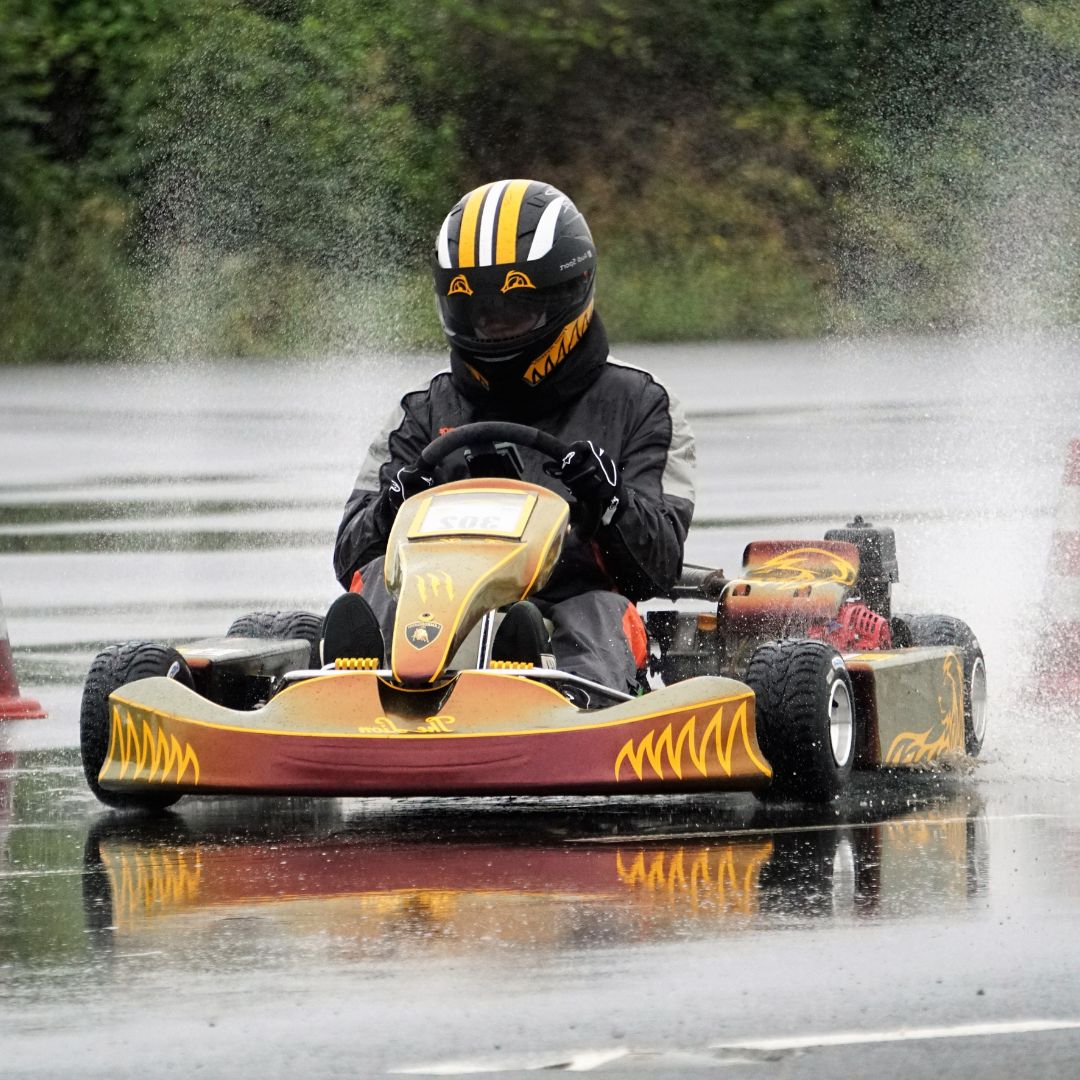
Updated: 29.4.25
Looking for karting tips and tricks to handle a slippery race day? Whether you’re a total beginner or chasing championship points, learning to control a go kart on a wet track is essential for racing success.
This guide breaks down the most practical go kart racing tips for wet conditions—from gear and tyre setup to braking and cornering techniques—so you can stay fast, stay safe, and stay in control.
1. Check the Weather Forecast
Smart racers watch the skies. Rain in the forecast means you’ll need to change your racing line, tyre pressure, and even your mindset. Preparation always beats reaction.
2. Prepare Your Kart for Wet Conditions
Check brakes, tyre tread, and suspension. Adjust tyre pressure to gain more grip and inspect all components for water resistance. A clean, tuned kart = confident driving.
3. Dress for the Weather
Rain racing calls for waterproof boots, gloves, and a snug rainsuit. Good gear keeps you focused on lap times—not soggy socks.
4. Understand the Wet Racing Line
Avoid the rubbered-in line—it’s slick in the rain. Search for grip on wider lines or unused edges of the track. Slow in, smooth out.
5. Brake Early and Smoothly
Late braking is risky on wet asphalt. Ease into the brakes earlier, and release them gently before corner entry to avoid locking up.
6. Apply Throttle with Precision
Go easy on the gas pedal. Sudden acceleration causes wheelspin. Use progressive throttle application to keep the kart planted.
7. Choose the Right Tyres and Pressure
Use grooved rain tyres and lower tyre pressures for a larger contact patch. This helps displace water and gives more traction in corners.
8. Read the Track Surface
Look for puddles, sheen, and damp zones. Learn where the water collects and adjust your line lap-by-lap. Awareness = speed.
9. Adjust Your Mental Game
Karting in the rain is a mental challenge. Stay calm, adapt quickly, and don’t fear the slip. Controlled aggression wins wet races.
10. Practice, Practice, Practice
Wet driving is a skill. The more rain laps you log, the better your throttle control, brake feel, and line adjustments become. Rain makes you sharper.
Frequently Asked Questions
How should I drive a go kart in the rain?
Smooth inputs, wider lines, earlier braking, and gradual throttle application are key to staying safe and fast.
What tyres are best for wet karting?
Rain tyres with grooves to disperse water. Pair with slightly lower pressure for extra grip.
Can beginners race on a wet track?
Absolutely. Take it slower, and focus on clean lines and smooth driving. It’s one of the best ways to learn kart control.
Is kart setup different for wet conditions?
Yes. You’ll want lower tyre pressures, clean brakes, and a chassis that’s not too stiff. Setup matters more when grip is limited.
Looking for More Go Kart Racing Tips?
Check out our Karting Guides section for more track tips, beginner advice, and expert techniques.
Want to help your young driver practice all year round? Shop our range of all-weather electric ride-on go karts at RiiRoo.com.





Share:
How to Start Go Kart Racing: 10 Tips to Master Your First Race Start
Here's Why You Should Be Recycling Your Kids Toys